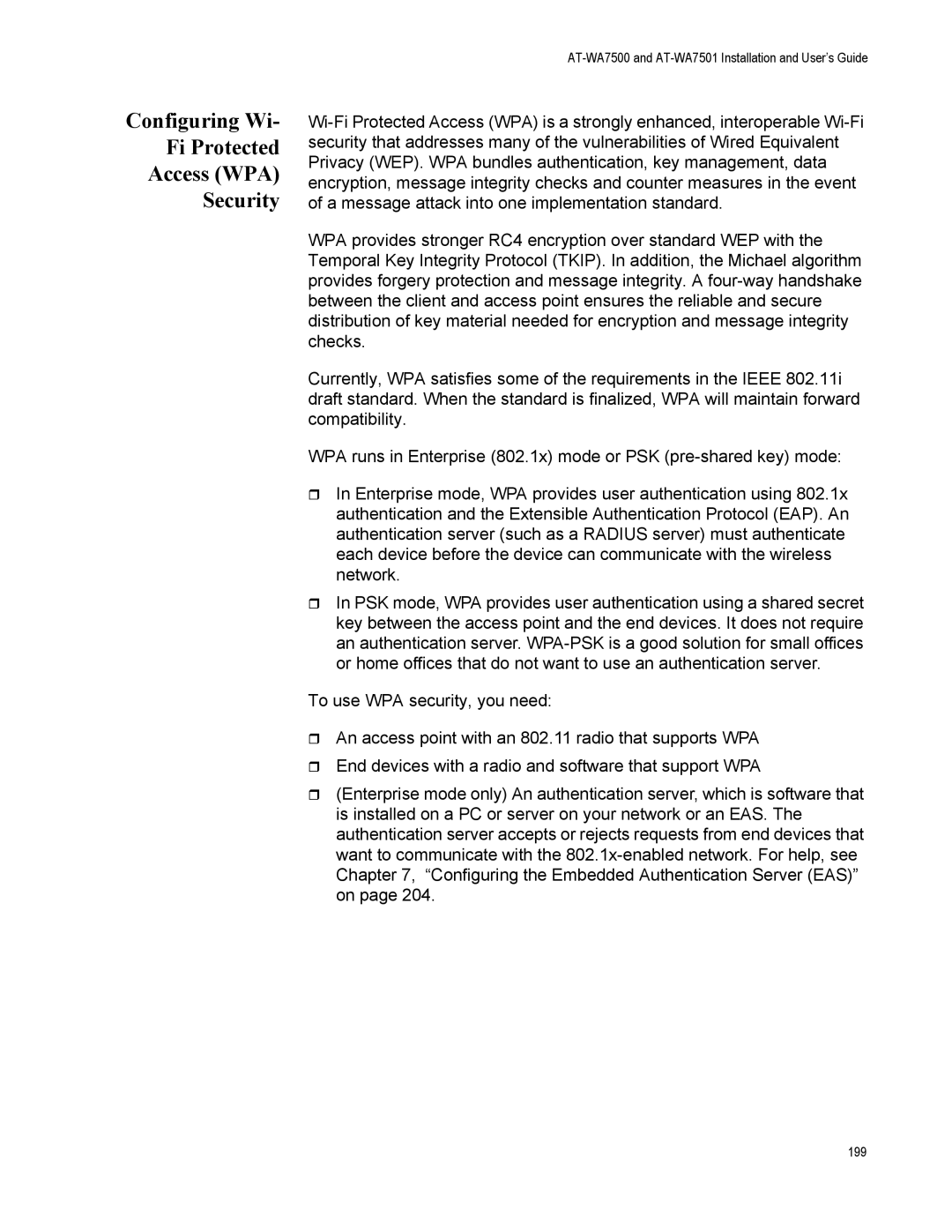Configuring Wi-
Fi Protected
Access (WPA)
Security
AT-WA7500 and AT-WA7501 Installation and User’s Guide
WPA provides stronger RC4 encryption over standard WEP with the Temporal Key Integrity Protocol (TKIP). In addition, the Michael algorithm provides forgery protection and message integrity. A
Currently, WPA satisfies some of the requirements in the IEEE 802.11i draft standard. When the standard is finalized, WPA will maintain forward compatibility.
WPA runs in Enterprise (802.1x) mode or PSK
In Enterprise mode, WPA provides user authentication using 802.1x authentication and the Extensible Authentication Protocol (EAP). An authentication server (such as a RADIUS server) must authenticate each device before the device can communicate with the wireless network.
In PSK mode, WPA provides user authentication using a shared secret key between the access point and the end devices. It does not require an authentication server.
To use WPA security, you need:
An access point with an 802.11 radio that supports WPA
End devices with a radio and software that support WPA
(Enterprise mode only) An authentication server, which is software that is installed on a PC or server on your network or an EAS. The authentication server accepts or rejects requests from end devices that want to communicate with the
199
